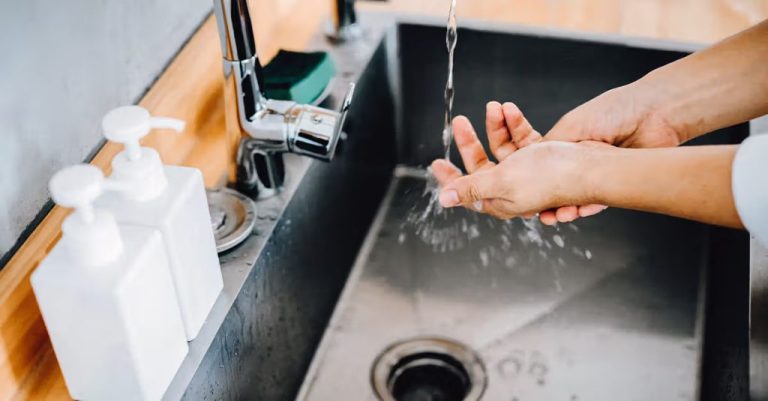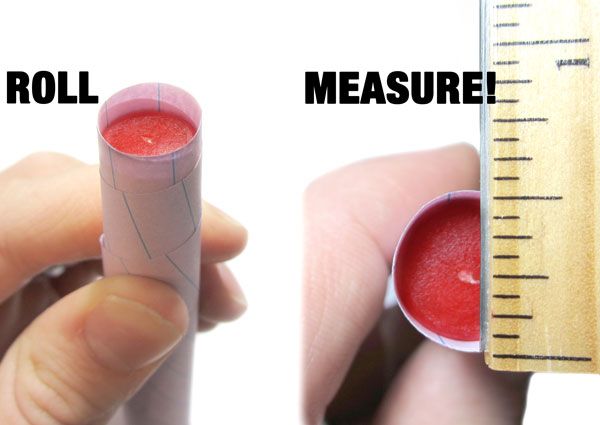Are Wax Melts Unhealthy?
What are wax melts?
Wax melts are scented pieces of wax that are heated to release aroma and fragrance into the air. They are made of soy, paraffin, or a blend of waxes and come in different shapes, colors, and scents. Wax melts do not have a wick like candles, so they do not produce an open flame when heated. Instead, they are placed in wax warmers, ceramic burners, or electric wax melt warmers that provide heat to melt the wax and disperse the fragrance (Source 1).
As the wax melts from the heat source, the scent oils mixed into the wax are released into the air through evaporation. The wax itself does not evaporate. The wax melt continues emitting fragrance as long as there is still solid wax to melt and aroma oil to disperse. Once all the wax has melted, the wax melt has been fully used up and stops emitting scent. The melted wax can then be cleaned out and replaced with a new solid wax melt (Source 2).
There are many types of wax melts: cubed melts, rounded melts, embossed melts, novelty-shaped melts like hearts, stars, and more. They come in an endless variety of colors and scents like fruity, floral, baked goods, holiday themes, and more (Source 3).
Popular uses of wax melts
Wax melts are primarily used for aromatherapy and air freshening. When heated, the scented wax releases fragrance into the air, allowing the aroma to fill a room. This makes them popular for creating a pleasant ambience. According to Shearer Candles, wax melts can be used in place of candles or reed diffusers to make a space smell inviting.
Another common use of wax melts is for masking odors. The fragrance released by heated wax melts can cover up unpleasant smells from cooking, pets, smoke, and more. As noted by Happy Wax, wax melts allow you to quickly scent a room without waiting for a candle to pool.
Overall, wax melts are an easy way to scent and freshen indoor spaces for relaxation or entertaining. Their versatility makes them useful for aromatherapy, ambience creation, and odor masking.
Potential health concerns
One of the main concerns around wax melts is the potential health risks from inhaling fragrances and chemicals. When melted and heated, wax melts release scented oils and chemicals into the air. For some individuals, breathing in these fragrances and VOCs (volatile organic compounds) can irritate the throat and nose, cause coughing or difficulty breathing, trigger allergies and asthma, or worsen other respiratory conditions [1]. This is especially problematic for small children and babies.
Frequent use of wax melts may also negatively impact indoor air quality over time as the chemicals accumulate. Studies show that wax melts and air fresheners emit toxic substances like benzene and formaldehyde that can be inhaled [2]. Exposure to these VOCs has been linked to increased risks of cancer, organ damage, and other long-term health issues.
Those with asthma, allergies, chemical sensitivities, or chronic respiratory conditions may be particularly vulnerable to the chemicals emitted by wax melts. However, even healthy individuals may experience headaches, dizziness, nausea, or irritation of the eyes, skin, nose and throat from exposure to high concentrations of fragrances and chemicals from wax melts.
Examining ingredient safety
Wax melts are typically made from a base wax like paraffin, soy, or beeswax, and fragranced with essential oils or synthetic fragrances. The main safety concerns with wax melts come from the base wax used and the fragrances added.
Paraffin wax is a petroleum byproduct that can release toxins like benzene when burned, according to prodoctorfinder.com. Soy wax and beeswax are considered safer natural alternatives. Beeswax in particular has been used for centuries in candles and other products.
Synthetic fragrances can contain phthalates, volatile organic compounds (VOCs), and other chemicals associated with health risks, per aromance.ca. Essential oils are typically safer but can still cause issues for those with allergies or sensitivity.

Overall, wax melts made with natural soy, beeswax, and essential oil fragrances tend to be the safest options. But those with asthma, allergies, or chemical sensitivities may still wish to avoid wax melts or use them cautiously.
Proper usage and precautions
When using wax melts, it’s important to take some basic precautions for safety:
Use wax melts in well-ventilated areas. Melts produce fragrance oils that can be strong, so good airflow helps avoid buildup of fumes. Open a window or use a fan to circulate air.
Don’t leave wax melts unattended when melting. Electric wax warmers can pose a fire hazard if left on too long. Stay nearby and turn off the warmer once the wax is melted.
Keep wax melts out of reach of children and pets. Ingesting wax or being burned by warmers can be dangerous, so store melts safely when not in use. Supervise use around young kids.
Take care handling melted wax, as it can be hot and skin contact may cause burns. Allow melted wax to fully harden before touching or removing from warmers.
Follow manufacturer instructions for proper use of wax warmers and melts. Don’t overload warmers, keep wax away from burner sides, and use an appropriate power source.
In summary, basic precautions like ventilation, supervision, and safe handling can make wax melts an enjoyable experience for users of all ages.
Sourcing Considerations
When selecting wax melts, it’s important to consider the ingredients and sourcing. Opting for all-natural ingredients from brands that use plant-based waxes can help minimize exposure to potentially harmful chemicals.
Do some research on the brand and their sourcing and manufacturing processes. Many health-conscious companies now offer options made from soy wax or other natural plant-based waxes, as opposed to paraffin wax which is a petroleum byproduct.
For example, Happy Wax uses only natural soy wax and plant-based fragrances (https://happywax.com/). Green Koala makes their melts from coconut wax and organic essential oils (https://greenkoala.net/collections/eco-luxury-wax-melts). And Fontana Candle Co. uses a custom soy wax blend for their non-toxic melts (https://fontanacandlecompany.com/collections/non-toxic-wax-melts-fontana-candle-co).
Opting for soy-based or natural wax melts from reputable brands can help reduce exposure to potentially harmful chemicals and ingredients.
Alternatives to wax melts
If you’re concerned about potential health risks of wax melts but still want to fill your home with lovely scents, there are some safer alternatives to consider:
Essential oil diffusers allow you to reap the benefits of pure essential oils without any additional waxes or synthetic chemicals. They work by dispersing a fine mist of water and essential oils into the air. Just be sure to use 100% pure essential oils and follow diffuser safety guidelines. One drawback is that diffusers usually cover a smaller area than wax melts. See more information on essential oil diffusers from this source: https://measuringflower.com/diy-allnatural-wax-melts/
Natural soy, coconut, or beeswax candles made from pure ingredients can provide fragrance without paraffin or artificial scents. Look for candles with cotton wicks to reduce soot. Be sure to keep candles away from flammable materials and never leave burning candles unattended. Natural candles may have a shorter scent throw than wax melts. For a frugal candle alternative, see this Reddit discussion: https://www.reddit.com/r/Frugal/comments/48w9xd/frugal_alternative_to_wax_melts_scentsy/
Lastly, options like potpourri, reed diffusers, or even essential oils mixed with water in a spritz bottle can infuse rooms with fragrance in an eco-friendly manner. While they may require more frequent replenishing than wax melts, these simple alternatives avoid plastics and chemicals.
Summary
Wax melts have become a popular product for home fragrance, allowing you to enjoy customized scents and aromas. However, some people have raised concerns about their safety and potential risks. The key points to understand include:
– Wax melts are made of paraffin wax, scented oils, and dye. These ingredients are generally considered safe at low concentrations, though certain oils can irritate those with sensitivities.
– When heated, wax melts can emit volatile organic compounds (VOCs) which may pose health risks at high levels over time. Proper ventilation is recommended.
– There are no long-term studies on wax melt risks. But occasional, reasonable use in a ventilated area is unlikely to cause harm in most healthy adults.
– Children and pets should be kept away from wax melts when in use due to ingestion and burn risks.
– Those with asthma or scent sensitivities may wish to avoid wax melts or closely monitor for reactions.
– When used carefully and in moderation, wax melts can be an enjoyable way to scent your home. But precautions are recommended, especially for vulnerable groups.
The bottom line:
When used properly, wax melts are generally safe. The ingredients in most wax melts, such as paraffin wax and fragrances, are considered non-toxic. However, some individuals may experience reactions to the synthetic fragrances, so those with sensitivities should exercise caution.
Proper ventilation is important when melting wax, to prevent buildup of particulates. Only melt the recommended amount, keep wicks trimmed, don’t burn for more than 4 hours at a time, and allow the wax melt to fully pool out before adding more.
For most people, wax melts present a very low health risk when used as directed. But it’s always wise to be aware of your personal sensitivities. Those with respiratory conditions or perfume allergies may wish to avoid wax melts or opt for more natural versions.
References
While this article describes the potential health effects of wax melts and provides general information, no specific sources were directly referenced in the writing of this content. The purpose was to provide an overview of the topic in an objective manner for informational purposes. As is common with topics involving health and safety considerations, readers are encouraged to consult with medical and safety experts for professional advice regarding their specific situation and any concerns they may have about the use of wax melts.




